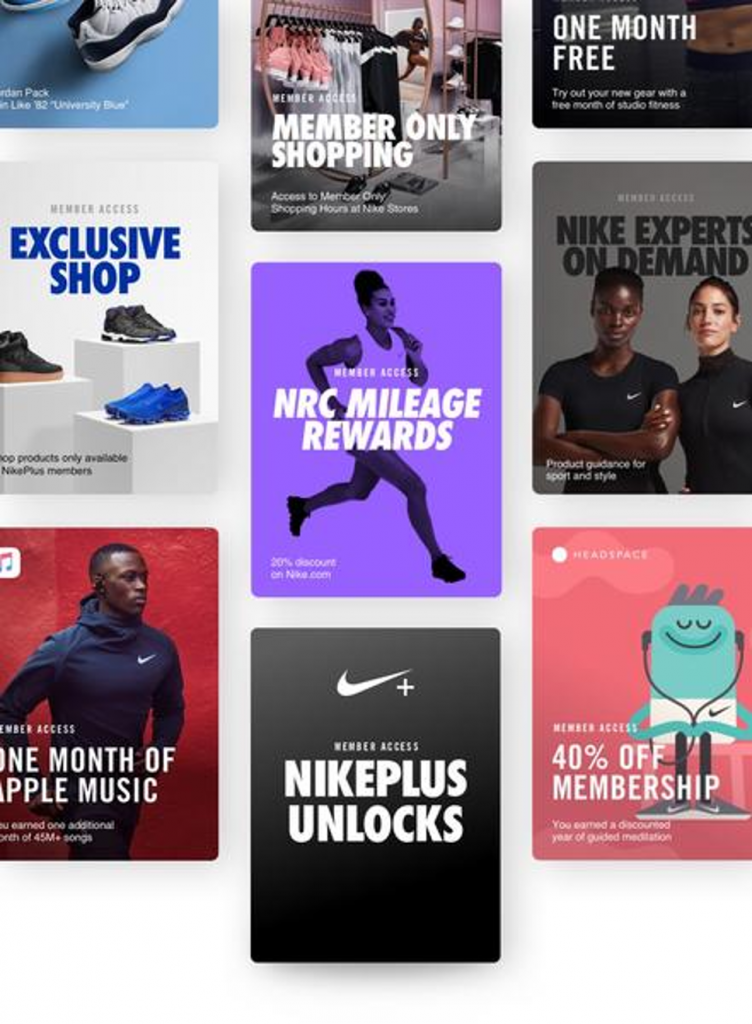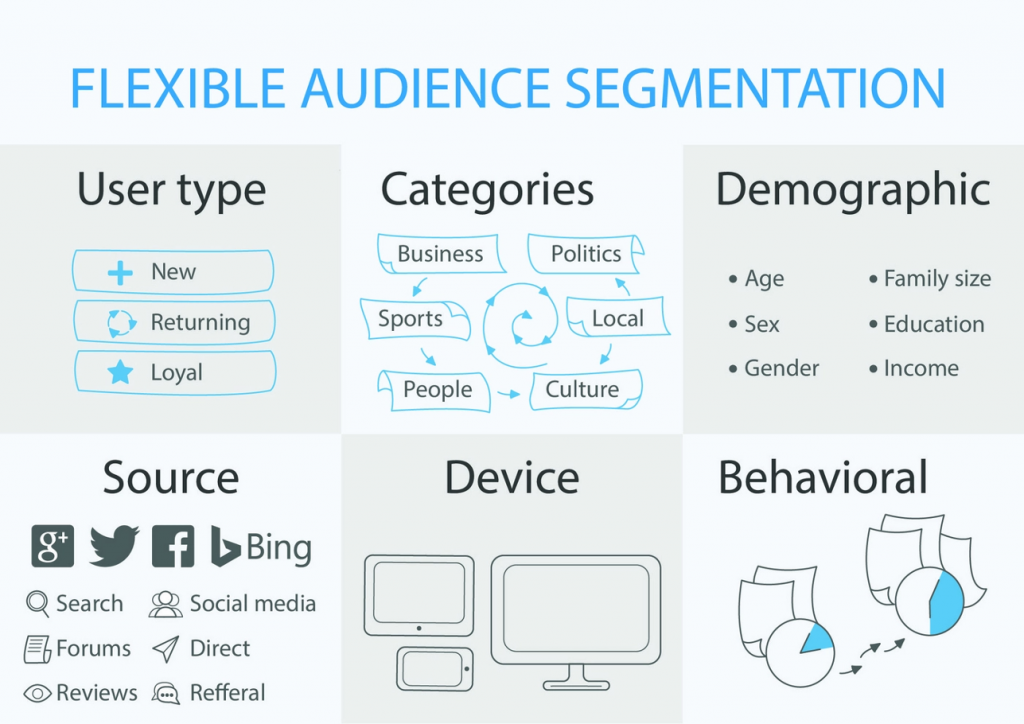For an increasing number of consumers, the days of simply walking into a store and browsing the racks, or flipping through the pages of a catalogue until something catches their eye – are long over. These days, the path to purchase is more like a labyrinth than a straight line. It is no longer relevant to ask whether your consumers are using email, search engines, or social media to shop. Today, the answer is most likely: all of the above – consumers now have endless ways to shop at their disposal, such as mobile, social, brick-and-mortar stores and many more.
Before smartphones became an integral part of the shopping experience, the average consumer used only two touchpoints before making a purchase decision (Source: Shopify). In the past, customers made most of their purchase decisions based on news, advertisements and direct mail that came through their mailboxes (Source: Investor In Customers). Hence it was pretty common for physical retailers to stick to offline advertising and online retailers to stick to online advertising. But now, more and more physical stores are branching into ecommerce and similarly, online brands are also shifting into the physical retail space – making it crucial for brands to develop a retail omnichannel marketing strategy in order to remain competitive.
The question is, how? Using all of your channels to create one unified experience for your customers! This includes both traditional & digital channels, point-of-sales displays, in-store & online experiences, and the list goes on.
In one word, in order to effectively reach the customers of today, you must be: everywhere.
Omnichannel may sound like just another buzzword, but it is an entirely new way to think about and deliver engaging customer experiences across various channels, devices, and platforms. In a world where every consumer has access to so many of these devices and platforms now, omnichannel is the way to go.
What is Omnichannel Marketing?
Simply put, omnichannel marketing refers to a cross-channel marketing strategy used to create an integrated and seamless shopping experience for your customers across all possible channels and touchpoints – whether they are shopping online from a desktop, mobile phone, or in a brick-and-mortar store (Source: Bloomreach).
This experience fosters a greater sense of familiarity and relationship between the consumer and the brand – helping to build a positive brand image and increase brand retention rates.
Multichannel VS Omnichannel Marketing
The terms multichannel and omnichannel are often used interchangeably. While they both share the same fundamental traits, it is critical to draw the line between an omnichannel experience and a multichannel experience. At its core, there does not seem to be much of a distinction between them, but if you take a closer look – you’ll realise that they are distinctly different.
Multichannel simply means that your brand is connecting with consumers on multiple marketing channels, which can be a good starting point. However, while you may use multiple channels to interact with your audience, you may not necessarily tie each of these channels and pieces together.
On the other hand, omnichannel implies a consistent and unified cross-channel approach, where consumers can seamlessly move from one platform to another. So you can have a well-designed website and engaging social media campaign, but if they do not work hand-in-hand, it’s not omnichannel.

Enter Disney: a brand that successfully captures the essence of a full-fledged omnichannel marketing experience for consumers. Disney’s My Disney Experience application is a one-stop solution allowing consumers to plan their whole Disney trip on a single platform (Source: Disney). With the app, consumers do not have to line up physically at the parks anymore. Now, they can simply purchase their tickets online, check ride times and explore customised content before setting foot in the park. Not only that, consumers can also have their pictures taken and make payment for all their park purchases when they get home via their accounts in the app itself. The entire app experience is consistent and seamless as everything carries over into wherever consumers are whether online or offline, and whichever devices consumers are using.
Although both multichannel and omnichannel involve selling across different physical and digital channels, the key difference lies in: customer experience. Multichannel starts with the company and moves outward whereas omnichannel begins with the customer and interacts across different channels to create a unified and seamless experience.
Why Omnichannel Marketing?
With the proliferation of smartphones, consumers are no longer just sticking to using one or two types of communication. Research by Harvard Business Review found that 73% of consumers shop on multiple channels (Source: Harvard Business Review). No matter what kind of business you are in, there is a high possibility that your consumers are frequently alternating between devices and platforms. Brands that adopt an omnichannel marketing strategy tend to do better as research by Aspect Software shows that brands with an omnichannel marketing strategy achieve a 91 per cent greater year-on-year customer retention rate compared to those who do not (Source: CM Commerce).
-
Improves brand familiarity, recall and trust
Consumers are more likely to buy from brands they trust, and omnichannel marketing provides a consistent messaging and experience across different platforms and touchpoints for your audience. Over time, this builds familiarity and trust, helping to improve the overall customer experience as well as boost customer retention and loyalty.

Take Starbucks for instance. No matter the country or location, you’ll know a Starbucks the moment you see one anywhere in the world, because the company is consistent with everything they do with regards to the brand. As an internationally recognised brand, Starbucks needs to be consistent with their branding – be it through the branded collaterals they put out, the in-store design or even the customer experience.
Whether you are browsing through social media or visiting any Starbucks store, the look and feel of the brand doesn’t change no matter which media you see it on, making it one of the top most well-loved global brands.
-
Boosts customer loyalty
Providing a consistent marketing message that traverses multiple platforms can also help to solidify customer loyalty.

Nike, for instance, launched the NikePlus programme where members can gain access to shopping perks like free shipping and exclusive offers. Members’ benefits are not just limited to mobile, web and email, as Nike brings membership to life in its offline stores as well – with express checkouts, special store hours, and a members-only floor at its flagship store in New York City (Source: CDO Trends).
Nike’s emphasis on being consistent ensures that there is no gap in how the brand is portrayed across various platforms and devices. Their consistency across all platforms improves the overall customer experience and helps the brand in strengthening brand loyalty among its consumers.
-
Increases sales
Most importantly, all the benefits of an omnichannel marketing strategy can work together to drive one key goal: sales. Offering a seamless experience makes it easier for consumers to find the products they need and buy them. Beauty giant Sephora is another brand that has been touted countless times for the brilliance behind their omnichannel customer strategy, successfully integrating both the in-store and digital experience.

In offline stores, the brand offers beauty workshops, complimentary makeovers and touchscreens for efficient product testings.

On online channels, prospective consumers can log into their “Beauty Pass” accounts to view their shopping history, virtually try on products, accumulate reward points and access tutorials to make the most of their recent purchases. This integrated approach has clearly paid off – as Sephora has nurtured over 11 million members, who spend 15 times more money on Sephora.com than the average consumer!
Steps to Developing a Successful Omnichannel Strategy
With the multitude of benefits and results that an omnichannel experience can offer, here’s how you can get started on integrating one into your brand’s marketing strategy:
-
Think consumer-first
The first step to omnichannel success lies in analysing and understanding the customer journey. In order to effectively reach them, you need to be present in the channels which they spend the most time on. So take a look at every touchpoint a consumer would come across upon discovering and interacting with your brand – both online and offline. Next, map out your customer’s journey from one platform to another so as to ensure that you don’t leave out any gaps – creating a seamless experience for them.
Take UK fashion brand Oasis for instance. As one of the more exemplary omnichannel brands, it has successfully managed to integrate its channels together to provide a true, unified omnichannel experience for consumers.

While its website showcases the most popular items being bought in-store, it also displays a series of User-Generated Content (UGCs) on Instagram that features its past customers wearing previously-purchased outfits from the store, serving as a form of customer review and strong social proof.


In addition, Oasis also integrates its social media platforms with its e-commerce site by putting out shoppable content on its Instagram feed. Hence, viewers can tap into an Instagram photo and be directed straight to the product pages themselves.
In store, Oasis has also been consistent in delivering a seamless customer experience. Its stores have touch screen displays to help consumers quickly identify items that are in stock, as well as their available sizes. On top of that, Oasis has its own mobile app that allows customers to browse styles and track orders. Taking notes from Oasis, the core of your marketing strategy should always revolve around your consumer. In an ever-challenging retail landscape, the winning brands will be those that provide the customer with the most seamless and effortless experience.
-
Segment your audience

Once you have understood the customer journey and collected the relevant data, it’s time to analyse and identify high-value customer segments for clear campaign strategies. Customer segmentation works hand-in-hand with your omnichannel marketing strategy, especially bearing in mind that not everyone wants or needs the same kind of content / journey / experience. If your brand offers a variety of products or services, you might want to look into segmenting your audience to ensure that you’re not sending out or pointing people to irrelevant information or content. This will help you identify the different channels to use and how you can integrate them to create a seamless flow, especially for today’s tech-savvy and multi-channel audience who may use more than one channel.
-
Integrate online and offline marketing
As we have already established, consumers nowadays tend to use multiple devices and channels to shop and interact with brands. So instead of waiting for consumers to reach you, engage with them on their preferred mediums and be active on multiple channels so you can target them at different stages of their customer journey. The challenge then is for your brand to integrate these different channel experiences to give one consistent, overall experience for the consumer.

In the local context, sporting goods giant, Decathlon, offers an effective omnichannel market approach that bridges both the offline and online experiences for its consumers. The brand equips its stores with automated inventory management tools such as Radio Frequency Identification (RFID) to automatically identify and track products – sending them to the shopper’s virtual cart so no scanning is required at checkout. In addition, everyone who purchases – whether online or offline – will automatically be part of Decathlon’s loyalty programme. This helps Decathlon to track consumers as they move across various channels and devices.
With the use of omnichannel marketing, you will be able to provide your consumers with a more seamless and unified experience across multiple channels and platforms. These efforts not only lead to a more enjoyable customer experience, but also higher customer loyalty, brand loyalty, and in turn – greater revenue. If you’re planning to strategise your omnichannel marketing plan, drop us a message and we’ll be more than happy to assist!
— —
Hero image: Blake Wisz, Unsplash
